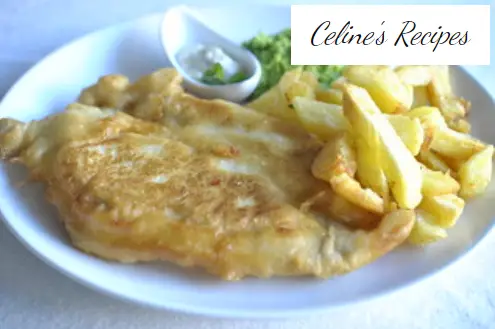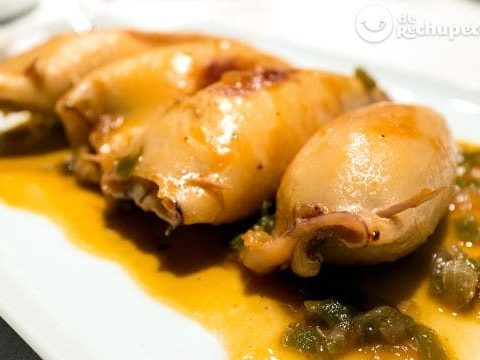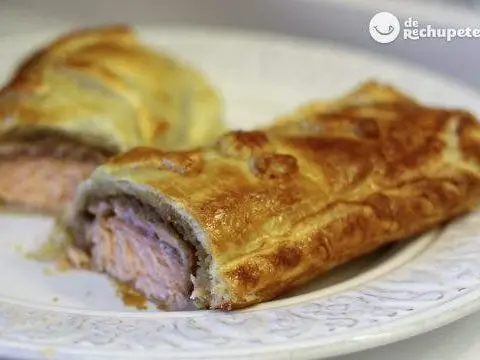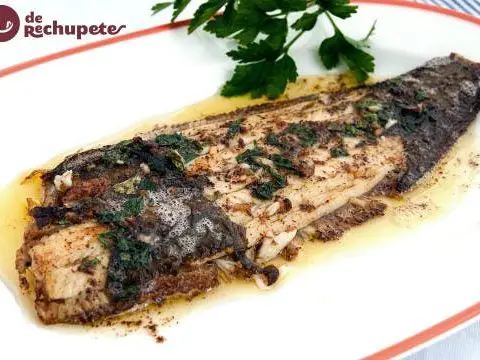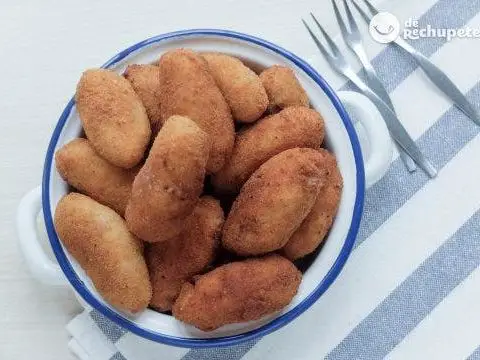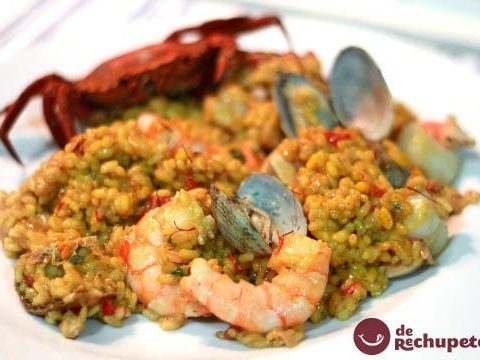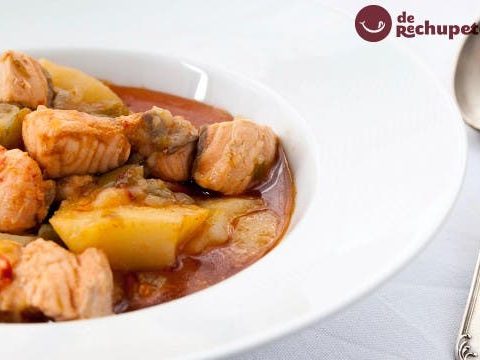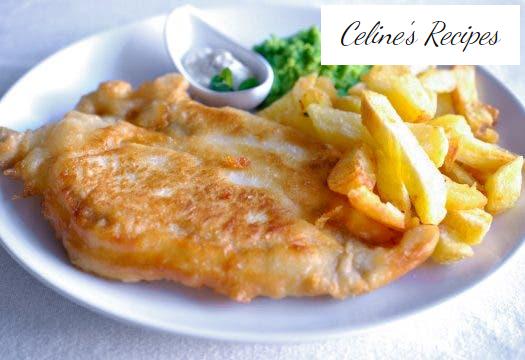
Info.
- Half
- 75 minutes
- For 4 people
- 4.2 € / person
- 395kcal per 100g.
How to make fish and chips .
One of the star fish recipes of British cuisine is fish and chips . A very complete dish in which the fish is coated and fried in abundant oil and served with a side of fried potatoes. Hence its name, fish and chips is fish and chips .
If you have traveled to the UK on occasion, you may have seen street vendors and small shops where this dish is made and marketed exclusively (or almost).
It is a delicious snack that you cannot stop trying and, when you do, it is difficult to forget.
Frying fish and potatoes make it a high-fat, high-calorie dish, so it’s best to reserve it for special occasions. So do the British, who often reserve a day of the week for fish and chips .
Many buy it on the way home from work, others round off the night out with it, and many others enjoy it at their favorite local pub or restaurant.
We have prepared it with a touch of mint and we will tell you how to do it along with the rest of the elements of this recipe, but we encourage you to use it as a garnish for other dishes, whether they are fish or meat.
With the amounts indicated above you will have plenty to garnish this fish and chips, but you will appreciate the leftovers because it is delicious and delicious!
Preparation of the pea puree. Mushy peas
- Peel and cut the onion into pieces. Heat the butter in a saucepan and sauté the onion in it over low heat for 10 minutes.
- Add the peas, which can be frozen or thawed, stir and fry for five more minutes.
- We water with the broth and cook over low heat 10 minutes, enough for the peas to absorb their flavor.
- Strain, reserving the broth, add the fresh mint leaves to the peas and crush.
- We adjust the point of salt and pepper, as well as the thickness. If it is too thick, add a little of the broth that we have reserved until we get the desired texture. We reserve until serving time.






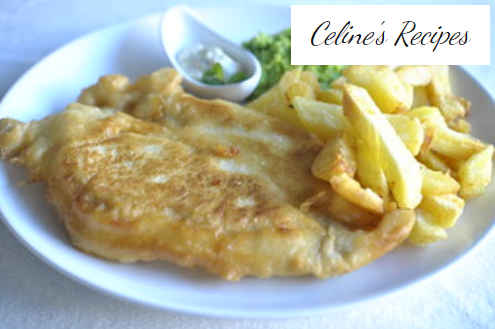
Preparation of the fried potatoes. Chips
- We peel the potatoes, wash them and cut them into sticks as similar in size as possible.
- We heat salted water in a large saucepan and bring it to a boil. We dip the potatoes and cook them for a few minutes, long enough to soften them but without losing their shape. That is, we bleach them.
- Remove the potatoes from the water and drain them well, drying with absorbent paper so that all the water can be removed if necessary.
- We heat abundant oil in a wide frying pan and, at a mild temperature (approximately 140ºC), fry the potatoes for 8 or 10 minutes.
- We want them to cook inside and be tender, but without browning on the outside. We remove from the pan and let them drain again in a strainer or a source with absorbent paper.
- A few minutes before serving the dish, we heat the oil again, but this time at a higher temperature (180º C). We dip the potatoes and fry them over high heat long enough for them to brown on the outside and form a crispy layer.
- Remove from the oil, drain, season to taste and serve along with the rest of the elements.
Preparation of the fish. Fish
- In a deep container, which we will use later to submerge the fish pieces, we mix the flour with the yeast, the baking soda and the beer. We stir with some rods until obtaining a homogeneous paste and without lumps.
- We mount the egg whites until stiff and add them to the previous mixture. We incorporate stirring gently and enveloping movements, from the bottom up. So that the whites do not lose the air that we have incorporated with the shake.
- Let the dough rest for 20 minutes.
- Meanwhile, we flour the fish fillets and shake to remove the excess flour.
- Heat abundant oil in a frying pan or turn on the fryer at 180º C.
- We dip the fish fillets in the batter dough, drain the excess and put them in the pan.
- Fry on both sides until the batter turns golden. Then we remove the oil and drain the excess fat on a source with absorbent paper.
We serve immediately together with the fried potatoes, the pea puree, the tartar sauce and some lemon wedges.
You can see all the step by step photos of the fish and chip recipe in this album. If you have doubts, follow the photos and you will get a perfect fish and chip.
Tips for a yummy fish and chip
- For an authentic and delicious “fish and chips” experience, it is very important to respect and observe well the times and temperatures of all the dishes that make up this “British” dish.
- It is an easy dish to prepare, but everything can go to waste if we do not coordinate well the preparation of potatoes and fish, which almost have to go together.
- Especially the moment of the final frying. Therefore, for the optimal result, it is advisable to partially prepare the potatoes, leaving the last frying for the time we fry the fish. So we can serve both freshly made, crispy and enjoy a 100% platform.
- Good fish is key and makes the difference between regular fish and chips and yummy fish and chips. Maybe the turbot is out of budget or difficult to find.
- If this is the case, you can replace it with hake or cod. Its meats are firm and, filleted (without bones or skin), very suitable for frying.
- There is no fish and chips worth its salt without the accompaniment of tartar sauce. You can prepare it yourself by following our tartar sauce recipe. It is blown to prepare and does not cost any effort. You can also buy it, but homemade always tastes better, don’t you think?
- This fish and chip recipe has been left to me as gold in cloth by a Galician friend based in London, Lucy. Who has borrowed it from Tom Kerridge , one of the most prestigious British chefs in the country whose elaborations are always a guarantee of success.
- What we like most about Tom Kerridge’s recipe is that he uses one of our favorite fish, turbot . This is quite unusual, since the common fish and chips are prepared with cod or hake, but it gives a bright touch to the dish. And is that a good product is the beginning of a good meal.
- Fish and chips are usually accompanied by “mushy peas” or pea puree that balances the whole and gives it a healthy note.
- To fry the potatoes and fish you can use both olive oil and vegetable oil. As you know, olive oil gives a certain flavor to foods that are fried in it and the vegetable does not. The choice of one or the other will depend on your taste.
